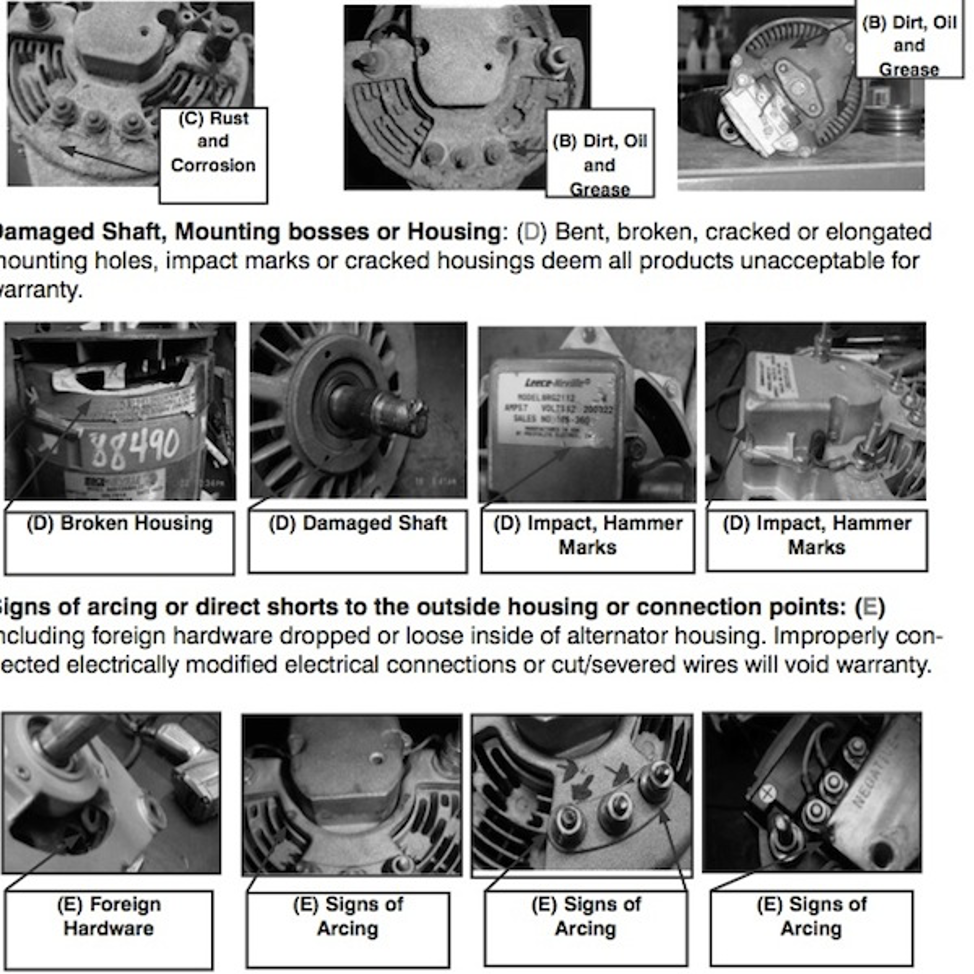by Leese Neville
Items contained in this document are associated with the published Commercial Warranty Policy of Prestolite Electric Incorporated (Reference document PP1143A.)
***Please Note: Conditions that are not covered under Prestolite Electric Inc. warranty, such as oil saturation could be the result of a primary failure mode of another component. This primary failure mode may be covered by the Original Equipment Manufactures warranty policy. Please refer to the manufacturer’s applicable warranty policy and associated procedures.
Date Code Verification: (A) Part must contain a part label. If the label is missing or destroyed a justifiable reason must be presented and accepted by a representative before a claim process is initiated. A missing label or a label which has been intentionally destroyed may void the warranty. If the date code is newer than the vehicle manufacture date / in-service date, this will indicate that this is a replacement part. The date code must coincide with the date of the invoice when the part was purchased or be validated by an “install date”. Always verify that the mileage and time do not exceed the amount of warranty permits by model number. Reference warranty by model / vocation / O.E.M.

Excessive dirt, grease, or oil soaked/saturated condition: (B) Oil and grease on the surface and inside of the alternator will prevent the unit from cooling properly and cause premature failure. This will also create a low voltage condition on the vehicle. Remove the fan from the alternator and look inside the openings; if excessive oil, dirt, and debris are present this will void the warranty.
Rust and corrosion: (C) Alternators corroded to a point where they can not function, or the rust and corrosion cause intermittent or no operation. This is normally caused by road salt, also by harsh chemicals unfriendly to aluminum and metals. Examples are positive side rectifiers shorted to the case by a “corrosive bridge”, the rotor rusted and seized to the stator, or electrical connections open due to corrosion. Rotate rotor shaft with hand and inspect that it rotates freely.
